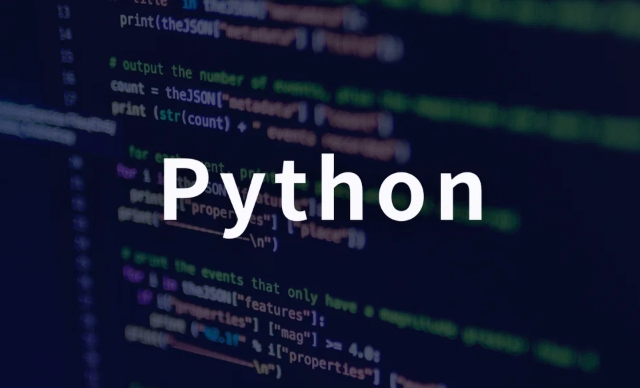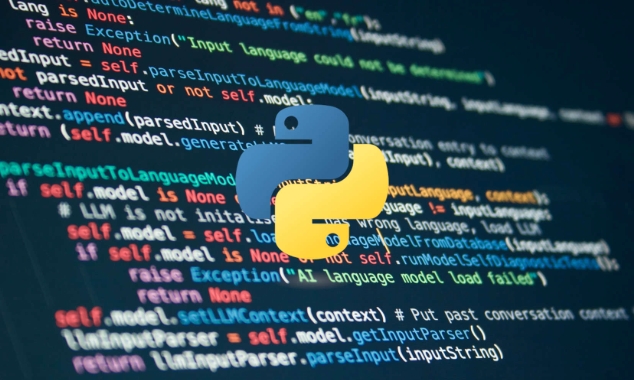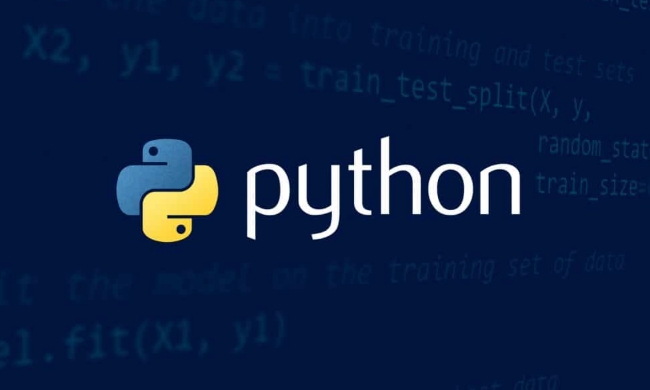Daemon thread is a background thread in Python that does not affect program exit. 1. Its existence does not affect the end of the program. When all non-daemon threads are executed, the program will end, regardless of whether the daemon thread has completed it; 2. The daemon thread is suitable for unimportant or interruptible tasks, such as cache cleaning and log collection; 3. To set the daemon thread, you need to set the daemon attribute to True before starting, and the attribute cannot be modified after the thread starts; 4. Exceptions in the daemon thread will not be caught, which may lead to silent failure; 5. The end of the main thread does not mean the end of the program, and the program will exit after all non-daemon threads have ended; 6. The new thread created in the daemon thread is also a daemon thread by default.

In Python, Daemon Threads is a kind of "background thread", and its existence or failure does not affect the exit of the program. That is to say, when all non-daemon threads are executed, the program will end, regardless of whether there are still running daemon threads.

What is a daemon thread?
A daemon thread is like a "service provider" that runs silently in the background, but does not determine when the program ends. For example, if you start a thread to clean the cache regularly, this thread can be set as a daemon thread. This cleanup thread will also be automatically terminated as long as the main thread and other non-daemon threads end.
Threads in Python are not daemon threads by default. You can turn it into a daemon thread by setting thread.daemon = True .

To give a simple example:
import threading
import time
def background_task():
While True:
print("Doing something...")
time.sleep(1)
thread = threading.Thread(target=background_task)
thread.daemon = True # Set as daemon thread.start()
print("Main thread ends.") After running, you will find that the main thread exits after printing, and background_task will also be forced to end.

The difference between daemon thread and non-daemon thread
- Non-daemon thread : After the main thread ends, the program will wait for all non-daemon threads to complete execution before exiting.
- Daemon thread : As long as all non-daemon threads end, they will be terminated regardless of whether they have been executed or not.
You can understand it as: daemon threads are "sacrificial", and non-daemon threads are "must complete tasks".
For example:
- The main thread starts a daemon thread and a non-daemon thread.
- The non-daemon thread needs to run for 5 seconds, and the daemon thread needs to run for 10 seconds.
- After the main thread is finished, the program will wait for the non-daemon thread to execute (5 seconds), and then end directly, and will not wait for the daemon thread.
How to use daemon thread correctly?
Daemon threads are suitable for tasks that are "unimportant" or "can be interrupted at any time", such as:
- Log collection
- Cache Cleanup
- Heartbeat detection
- Backend monitoring
If you have some tasks that must be completed, you cannot be set as a daemon thread. For example, uploading data, saving status, database transactions, etc.
Pay attention to setting up daemon threads:
- Once the thread starts,
daemonattribute cannot be modified. - Exceptions in the daemon thread will not be caught by the main thread, which can easily cause "silent failure".
Common misunderstandings and precautions
- The end of the main thread does not mean the end of the program : the program will truly exit only if all non-daemon threads are finished.
- Don't rely on daemon threads to do cleaning work : because they may be forced to terminate and resources may not be released properly.
- The new thread started in the daemon thread is also a daemon thread by default : if you create a thread in the daemon thread, the new thread will inherit the daemon attributes.
Basically that's it. Daemon threads are a practical but easily overlooked feature. Good use can simplify background task management, and poor use can also lead to the task being terminated before completion.
The above is the detailed content of Daemon Threads in Python. For more information, please follow other related articles on the PHP Chinese website!

Hot AI Tools

Undress AI Tool
Undress images for free

Undresser.AI Undress
AI-powered app for creating realistic nude photos

AI Clothes Remover
Online AI tool for removing clothes from photos.

Clothoff.io
AI clothes remover

Video Face Swap
Swap faces in any video effortlessly with our completely free AI face swap tool!

Hot Article

Hot Tools

Notepad++7.3.1
Easy-to-use and free code editor

SublimeText3 Chinese version
Chinese version, very easy to use

Zend Studio 13.0.1
Powerful PHP integrated development environment

Dreamweaver CS6
Visual web development tools

SublimeText3 Mac version
God-level code editing software (SublimeText3)

Hot Topics
 Polymorphism in python classes
Jul 05, 2025 am 02:58 AM
Polymorphism in python classes
Jul 05, 2025 am 02:58 AM
Polymorphism is a core concept in Python object-oriented programming, referring to "one interface, multiple implementations", allowing for unified processing of different types of objects. 1. Polymorphism is implemented through method rewriting. Subclasses can redefine parent class methods. For example, the spoke() method of Animal class has different implementations in Dog and Cat subclasses. 2. The practical uses of polymorphism include simplifying the code structure and enhancing scalability, such as calling the draw() method uniformly in the graphical drawing program, or handling the common behavior of different characters in game development. 3. Python implementation polymorphism needs to satisfy: the parent class defines a method, and the child class overrides the method, but does not require inheritance of the same parent class. As long as the object implements the same method, this is called the "duck type". 4. Things to note include the maintenance
 Python Function Arguments and Parameters
Jul 04, 2025 am 03:26 AM
Python Function Arguments and Parameters
Jul 04, 2025 am 03:26 AM
Parameters are placeholders when defining a function, while arguments are specific values ??passed in when calling. 1. Position parameters need to be passed in order, and incorrect order will lead to errors in the result; 2. Keyword parameters are specified by parameter names, which can change the order and improve readability; 3. Default parameter values ??are assigned when defined to avoid duplicate code, but variable objects should be avoided as default values; 4. args and *kwargs can handle uncertain number of parameters and are suitable for general interfaces or decorators, but should be used with caution to maintain readability.
 Explain Python generators and iterators.
Jul 05, 2025 am 02:55 AM
Explain Python generators and iterators.
Jul 05, 2025 am 02:55 AM
Iterators are objects that implement __iter__() and __next__() methods. The generator is a simplified version of iterators, which automatically implement these methods through the yield keyword. 1. The iterator returns an element every time he calls next() and throws a StopIteration exception when there are no more elements. 2. The generator uses function definition to generate data on demand, saving memory and supporting infinite sequences. 3. Use iterators when processing existing sets, use a generator when dynamically generating big data or lazy evaluation, such as loading line by line when reading large files. Note: Iterable objects such as lists are not iterators. They need to be recreated after the iterator reaches its end, and the generator can only traverse it once.
 Python `@classmethod` decorator explained
Jul 04, 2025 am 03:26 AM
Python `@classmethod` decorator explained
Jul 04, 2025 am 03:26 AM
A class method is a method defined in Python through the @classmethod decorator. Its first parameter is the class itself (cls), which is used to access or modify the class state. It can be called through a class or instance, which affects the entire class rather than a specific instance; for example, in the Person class, the show_count() method counts the number of objects created; when defining a class method, you need to use the @classmethod decorator and name the first parameter cls, such as the change_var(new_value) method to modify class variables; the class method is different from the instance method (self parameter) and static method (no automatic parameters), and is suitable for factory methods, alternative constructors, and management of class variables. Common uses include:
 How to handle API authentication in Python
Jul 13, 2025 am 02:22 AM
How to handle API authentication in Python
Jul 13, 2025 am 02:22 AM
The key to dealing with API authentication is to understand and use the authentication method correctly. 1. APIKey is the simplest authentication method, usually placed in the request header or URL parameters; 2. BasicAuth uses username and password for Base64 encoding transmission, which is suitable for internal systems; 3. OAuth2 needs to obtain the token first through client_id and client_secret, and then bring the BearerToken in the request header; 4. In order to deal with the token expiration, the token management class can be encapsulated and automatically refreshed the token; in short, selecting the appropriate method according to the document and safely storing the key information is the key.
 What are Python magic methods or dunder methods?
Jul 04, 2025 am 03:20 AM
What are Python magic methods or dunder methods?
Jul 04, 2025 am 03:20 AM
Python's magicmethods (or dunder methods) are special methods used to define the behavior of objects, which start and end with a double underscore. 1. They enable objects to respond to built-in operations, such as addition, comparison, string representation, etc.; 2. Common use cases include object initialization and representation (__init__, __repr__, __str__), arithmetic operations (__add__, __sub__, __mul__) and comparison operations (__eq__, ___lt__); 3. When using it, make sure that their behavior meets expectations. For example, __repr__ should return expressions of refactorable objects, and arithmetic methods should return new instances; 4. Overuse or confusing things should be avoided.
 How does Python memory management work?
Jul 04, 2025 am 03:26 AM
How does Python memory management work?
Jul 04, 2025 am 03:26 AM
Pythonmanagesmemoryautomaticallyusingreferencecountingandagarbagecollector.Referencecountingtrackshowmanyvariablesrefertoanobject,andwhenthecountreacheszero,thememoryisfreed.However,itcannothandlecircularreferences,wheretwoobjectsrefertoeachotherbuta
 Python `@property` decorator
Jul 04, 2025 am 03:28 AM
Python `@property` decorator
Jul 04, 2025 am 03:28 AM
@property is a decorator in Python used to masquerade methods as properties, allowing logical judgments or dynamic calculation of values ??when accessing properties. 1. It defines the getter method through the @property decorator, so that the outside calls the method like accessing attributes; 2. It can control the assignment behavior with .setter, such as the validity of the check value, if the .setter is not defined, it is read-only attribute; 3. It is suitable for scenes such as property assignment verification, dynamic generation of attribute values, and hiding internal implementation details; 4. When using it, please note that the attribute name is different from the private variable name to avoid dead loops, and is suitable for lightweight operations; 5. In the example, the Circle class restricts radius non-negative, and the Person class dynamically generates full_name attribute






